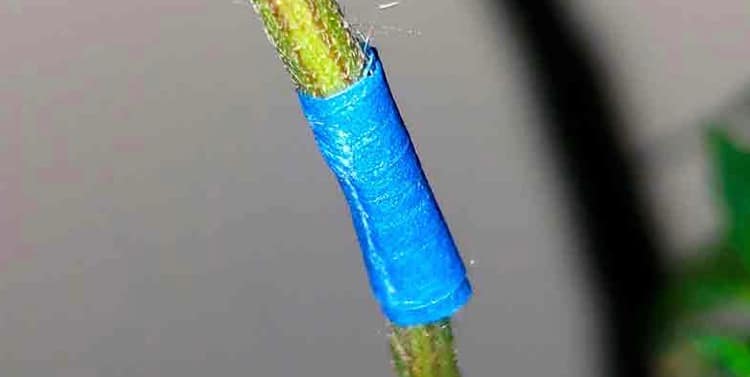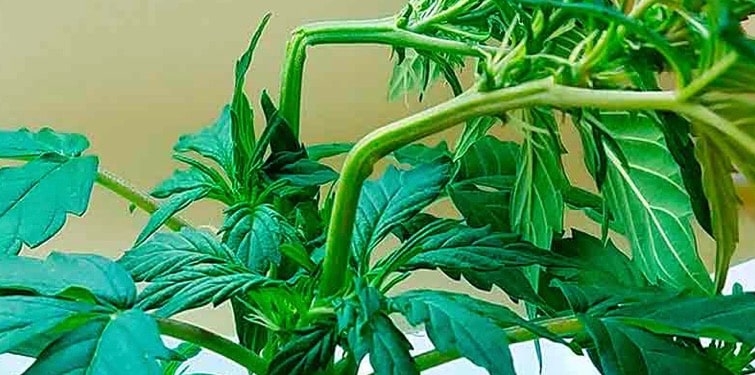Broken Cannabis Branches: What to Expect?”
Broken marijuana branches are a fairly common problem when growing plants both indoors and outdoors.
Beginner gardeners often run into this problem because they may hurt plants by accident because they don’t know what they’re doing. Mechanical injuries to the main stem and side shoots cause significant stress to hemp seedlings. Damage like this makes plants weaker, makes them more likely to get diseases, and lowers crop yields. In some cases, plant injuries can even lead to death.
To keep marijuana plants from getting hurt, the person growing them must be careful. When moving, replanting, or controlling the growth of seedlings in other ways, extra care should be taken. When using techniques that are so hard on plants, the grower should move as slowly and carefully as possible. It is also important to note that hemp plant branches are much easier to break.
When cultivating cannabis outdoors, measures to protect plants from damage should be applied immediately. This will help protect the plants from strong winds and other adverse weather conditions.
Air circulation is beneficial for the development of hemp plants, making them stronger. However, constant winds and sudden gusts of air can destroy the crop. Protecting hemp plants from the wind and preventing branch breakage is quite simple and inexpensive. It is enough to firmly secure the main stem, thereby preventing any movement during subsequent growth.
Causes of Broken Hemp Branches
When growing hemp indoors, branches are most often broken due to careless handling of the plant. The stiff and straight branches of marijuana plants are particularly sensitive and brittle. Strong winds have the potential to break cannabis plants when grown outdoors, whereas fan streams have the potential to harm them indoors.
Breeders often use techniques to control the plant’s growth and improve its yield, which can hurt the branches and cause them to break.
For example, hemp branches can break even after using low-stress training methods due to the grower’s inexperience. The fact is that these techniques involve bending and putting too much weight on the branches, which could be bad for the plant’s health.
Even if the shoots were left alone and not broken while the techniques were being used, the damage caused by bending can be enough to hurt crop yields and the quality of the final product. When broken hemp branches are found, it is very important to help the plant right away. Otherwise, the harvest can be lost. Open damage to the bush is particularly dangerous, as it can lead to infection. Additionally, tears in tissue and wounds can lead to the complete death of seedlings.
How to Restore Broken Hemp Branches

How to Prevent and Fix Broken Marijuana Branches: Tips for Indoor and Outdoor Growing
The easiest and most common way to fix broken hemp branches is to use sticky tape or tape. The degree of damage and the weight of the broken branch itself should serve as a guide when selecting the material. The bush can be saved by performing several manipulations in a certain order.
- To start, it is necessary to prepare a 10-centimeter-long strip of sticky tape or tape.
- Then, wrap the branch or stem with the tape at the fracture point so that the broken part is back in place.
- Next, check the reliability of the fixed branch and use additional support if necessary.
- This structure should remain on the plant wound for 2-4 weeks, until complete recovery.
If a hemp branch has completely snapped off and fallen, it will cause even more stress to the plant. However, this situation can be corrected by attempting to regrow the stem. But action must be taken immediately, and the operation to repair the damage should be done as carefully as possible. Reanimation of detached branches is performed in the same way as treatment for broken branches
If, while growing hemp, the grower removed a lower branch without flowers, there is no point in trying to revive it, and it is much easier to discard it.
Bent Cannabis Branches
Bent branches are the most common type of damage when growing marijuana. Bent and twisted stems and branches cannot maintain their viability, so without treatment, they lead to extremely negative consequences.

How to Prevent and Fix Broken Marijuana Branches: Tips for Indoor and Outdoor Growing
Due to the bends and folds, bent cannabis branches have difficulty saturating the upper parts of the plant with water and nutrients.
If the branches are severely bent or overloaded, this can have irreversible consequences. They will continue to grow, but much slower compared to healthy ones. The situation is exacerbated when the lower branches of hemp are bent; in addition to the lack of water and fertilizers, they will also receive less light.
Cannabis branches can bend for the same reasons that they can break. Aggressive growing methods, mechanical damage, and other external factors that affect plant growth often lead to such damage.
However, another cause of bent cannabis branches is entirely natural. In the last weeks of the flowering stage, marijuana leaves and flowers become particularly heavy due to the resin sticking to them. Therefore, growers recommend taking measures to tie and support plants just before harvest.
How to fix bent cannabis branches
Bent marijuana plant stems can be saved by giving them the correct position and using sticky tape or tape to fix them. To do this, you need to follow a few steps in a specific sequence.
First, prepare a small stick made of wood or plastic. Its length should reach the point of the branch’s bend, and a fork should be made at its end. The next step is to install the supporting structure in the soil. It is necessary to fix the bent cannabis branch to the stick and fix it in the correct position using sticky tape. This structure should support the plant for 1-2 weeks. This is enough time to restore the damaged hemp branch and continue its growth.
At the end of the designated period, the healing structure is removed. Sticky tape should be removed with special care, as the branch at the site of damage may still be too weak and fragile.
